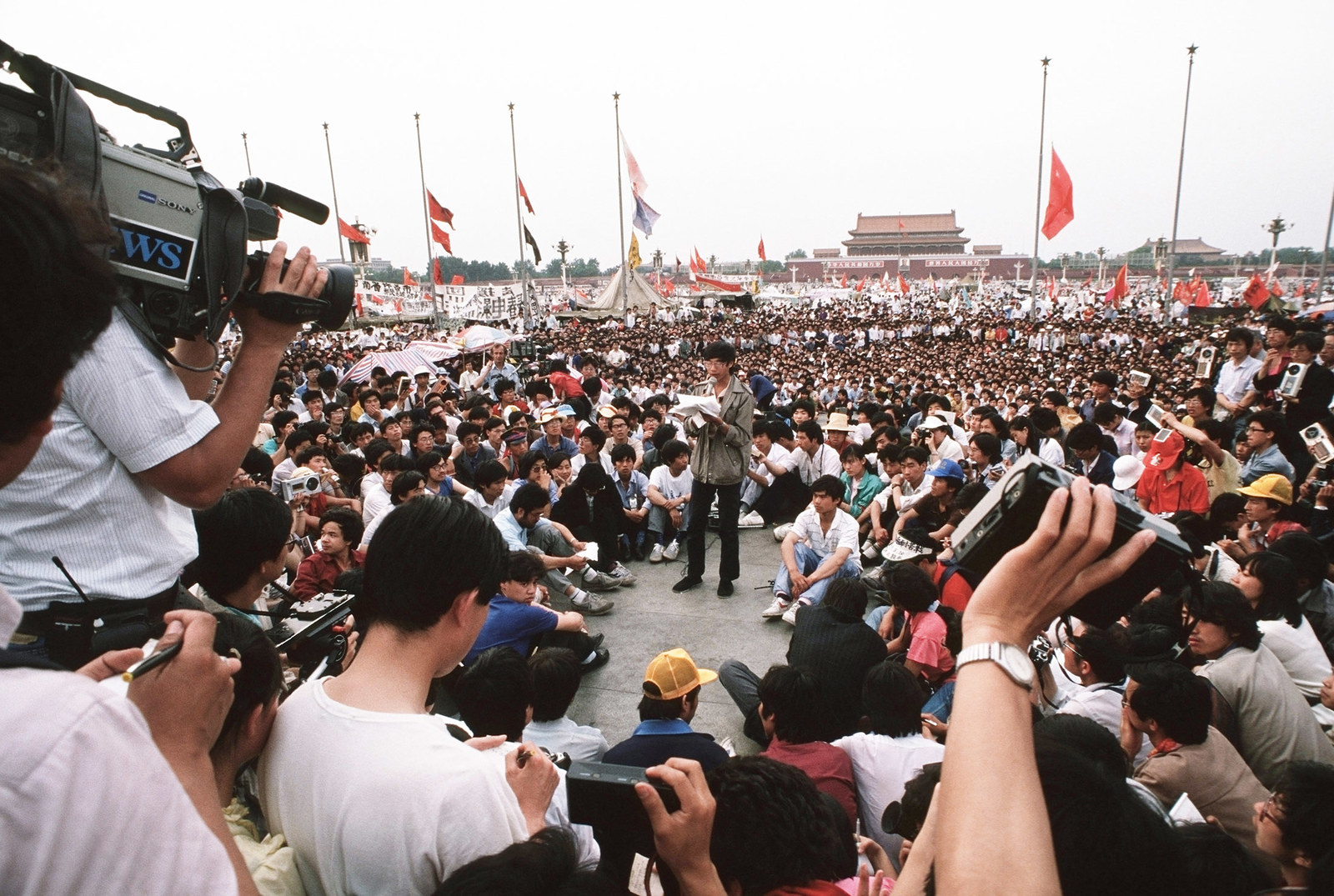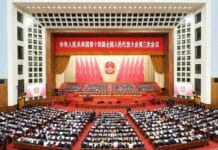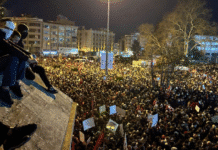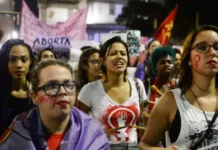In 1989, Chinese students and workers shook the world
Joshua Koritz, Socialist Alternative (US)
Here we are publishing an article from our US comrades of Socialist Alternative looking back on the mass democracy struggle in China in 1989.
Hundreds of thousands occupied Tiananmen Square in Beijing and thousands more participated throughout the country. The movement paralyzed the Chinese bureaucracy which was slowly transitioning the planned economy toward capitalism.
Forty years earlier, the Chinese Revolution led by the Chinese Communist Party (CCP) overthrew capitalism and landlords. Foreign capitalist interests were expelled and all production brought into state ownership. But unlike the Russian Revolution in 1917, the Chinese Revolution was based on a peasant uprising, not on democratic workers councils. While the revolution was a massive step forward it was also deformed at birth with a regime modelled on Stalinist Russia. Chinese Stalinism was frequently brutal, a characteristic the CCP leadership still has today.
When students began their pro-democracy protests in 1989, this was a revolt against the bureaucratic organization of the planned economy – not, as some claimed, a desire to return to capitalism (though there was a minority who held illusions in capitalism). As this movement grew, it turned into a challenge to the domination of the Chinese bureaucracy – but not a challenge to the planned economy as a whole.
However, the tops of the CCP were not willing to go quietly and a revolutionary situation was posed. Students began the initial movement demanding democracy and an end to corruption. They were joined in the streets by workers who quickly set up their own independent organizations of struggle. Huge sections of the army supported the struggle and refused orders to suppress the movement. Eventually the Chinese bureaucracy brought in regiments that had been kept in seclusion in order to violently put down the movement.
Today, the Chinese working class is larger than ever but unlike thirty years ago, the Chinese economy is based on a form of “state capitalism.” Thus a revolutionary workers movement today would not limit itself to political change but would also to roll back the market-based reforms to reinstate a planned economy but crucially under the democratic control of the working people themselves.
The growth of the working class corresponds with the growth of the Chinese economy which now challenges the U.S. economy for global dominance. Trump’s trade war with China is an expression of that fact. With an economy that produces enough manufactured goods to supply the world, China’s economy has been based on low wages, a lack of environmental protections, and government subsidies. However in recent years, protest and strikes have forced the Chinese regime to raise wages, and now some manufacturers are moving elsewhere in search of more exploitable labor.
The Chinese regime under the current leadership of President Xi Jinping now seeks to challenge the U.S. and other imperialist powers for control of markets and global political influence. However, the Chinese government, corporations, and billionaires quake at the thought of the working class moving into action, as it did thirty years ago in a movement that culminated in the Tiananmen Square Massacre on June 4, 1989.

Students at the Start – Pro-Democracy
The Chinese Revolution, from the beginning, was based on Stalinist ideas. This meant the conscious installation of a bureaucracy with no attempt at democratic workers control. While capitalism was overthrown, it was replaced with a planned economy controlled by the Chinese “Communist” Party led by an administrative caste, not run by democratic workers’ councils like in the Russian Revolution of 1917.
Stalinism, based on the rule of a parasitic caste, was not stable. Leon Trotsky first explained that it would enter into crisis and this could have two outcomes:a regime based on workers democracy pointing toward socialism or the restoration of capitalism. The Tiananmen Square movement and the market reforms that followed were confirmation of this perspective.
The Stalinist theory of “Socialism in One Country” was a conscious abandonment of working-class internationalism. It put the needs of the Soviet bureaucracy for interntional trade and political stability over any working-class demands. This meant that after 1949, when China adopted these ideas, its bureaurocracy refused to accept a lower priority, and therefore, rather than forming a natural alliance with the USSR, butted heads with USSR.
From the 1970s on, China politically moved further away from the USSR and, by aligning with the U.S., toward market-based reforms. Nonetheless, by the late 1980s, economic crises alongside the movements demanding democratic reforms in the USSR and the Eastern Bloc affected Chinese society, particularly students who were angered by corruption and saw democratic reforms as a crucial demand.
In the leadership of the Chinese “Communist” Party (CCP) there were, and remain power struggles based around the speed of market-based reforms. That balance shifted when in the spring of 1989, Hu Yaobang, a party leader seen as being more pro-democracy, died of a heart attack. Two days later, on April 17, 700 students and teachers marched into Tiananmen Square. They chanted “Long live Hu Yaobang,” “long live democracy,” “down with corruption,” and “down with autocracy” (Tiananmen 1989: Seven Weeks That Shook the World, chinaworker.info).
Five days later, ignoring a government prohibition, 200,000 flooded into Tiananmen Square. This movement grew at a rapid pace, eventually including over one million people in 110 cities across China. Students declared an indefinite strike and set up an “autonomous federation” to coordinate. By the middle of May, workers in China joined the struggle in their hundreds of thousands.
Dynamic Democratic Movement Accelerates
The growth of this movement, initially around basic democratic demands, demonstrates the explosive nature of mass movements. Given the right situation, the kindling can become a massive blaze. The spontaneous action of the working class has the power to shut down the economic and, therefore, political life of any nation.
However, in the end, the Tiananmen Square movement did not win greater democracy. Today, China is, if anything, more repressive. The censors have buried the history of June 4, 1989 and even jails people who publicly attempt to keep the memory alive. The only commemorations happen in Hong Kong each year as thousands risk political retaliation and travel from the mainland to take part.
The rapid pace of events, the scale and widespread nature of the movement, as well as the bloody determination of the bureaucracy to crush the movement led to a situation that called for more than just determination. Strategy and leadership was needed to take this revolution to the next phase. As in all revolutionary situations, a conscious, planned effort is needed to finish the revolution and pass power over to the working class or the movement stalls out and allows the forces of reaction a chance to reassert control. This type of revolutionary leadership was missing in 1989. Many students believed the bureaucracy would eventually listen to them – they paid for this mistake with their lives.
Chinese Workers Step to the Front
While students kicked off the movement and were the most visible aspect in the occupation of Tiananmen Square, the working class came to the fore in this struggle. The urban working class had grown far stronger since the 1949 Revolution. The Chinese bureaucracy was terrified of this force organizing for itself against the interests of the ruling caste who were increasingly focused on commerce with the U.S. and capitalist world.
In mid-May this is exactly what happened. Workers from across the country demonstrated outside the headquarters of the All China Federation of Trade Unions demanding independent unions – not ones controlled by the state and CCP. Everywhere, working people were organizing, going on strike, and demonstrating for democracy.
The Chinese bureaucracy’s strategy was to divide the growing workers’ movement from the students in Tiananmen. At first, the students actively resisted the solidarity of the workers, but the working class intrinsically knew it had to unite. Students began a hunger strike and workers from factories and workplaces around Beijing joined the demonstrations in support of the hunger strike that turned out half a million people on May 19.
The Reaction of the Bureaucracy
At first, the ruling politburo (the top CCP body) attempted to dialog with the students – multiple leaders visited the Square in person. However with the entrance of the working class into the struggle, the tone changed quite quickly. Preparing to violently clear the Square, Chinese Premier Li Peng declared that Beijing and much of the country was in a “state of anarchy.” He exclaimed “It is impossible for us [the bureaucracy] not to protect the safety and lives of students, not to protect our socialist [sic] system.” The day after speaking these words, martial law was declared. Li Peng would show he was more concerned with his system than the lives of students.
The bureaucracy found its normal tools for maintaining control were no longer reliable. The police in Beijing had withdrawn from the streets, yet with students directing traffic and maintaining order, crime actually went down. Meanwhile, students and workers visited the military barracks, where many students had served, and found sympathetic ears.
Finally, starting on June 4, the army swept into Tiananmen Square firing live ammunition on protestors, driving tanks over any person in its way, and leaving up to 1,000 people dead – though recently uncovered evidence suggests up to 10,000 casualties. Eyewitness accounts describe a massacre, not just in the Square, but in the surrounding neighborhoods as the Chinese regime drowned the movement in blood.
Lessons for Today
The dominant view among students was that eventually the government would have to compromise with the movement’s demands. This appeal to power fell disastrously short.
Had a revolutionary party existed in China at that time, it would have pointed to the how Stalinist regimes were prepared to crush workers revolts and movements that threatened their political rule. While supporting the students’ demands for democracy, it would have pointed to the limitations of capitalism and the dangers of further market reforms. Instead, a socialist party would have defended the planned economy but argued that it should be taken out of the hands of the bureaucracy which was increasingly dismantling state services. It would have argued for democratic elections to the boards of the state-owned companies throughout China – putting the economy directly into workers’ control. It would have called for an assembly of the movements in workplaces and universities while reaching out to rural communities as well.
Can History Repeat?
Since the seismic events of 1989, China’s economy has moved decisively toward capitalism. What was, in the ‘80s, a mixed economy slowly opening up to market forces is now irreversibly on the road to full capitalism while still maintaining elements of state planning.
The children of the rulers at that time have become billionaire “princelings” and the state allows considerably less democratic dissent.
However, today the potential power of the Chinese working class is even greater. According to World Bank statistics, China was 25% urban in 1989, today that number stands at over 58%. In the last 30 years, rural workers have moved into cities to take manufacturing and service sector jobs. In addition China is now challenging the U.S. for economic dominance and is a far larger cog in the world economy than in 1989. A similar type of movement today would not just bring the Chinese bureaucracy to its knees, but would throw a wrench into the entire world economy.
The Chinese working class may be ready to move again. In 2010, the Financial Timesestimated that there were about 80,000 “mass incidents” – which is the term the Chinese use for mass protests or labor demonstrations – per year in China. In 2018, a blogger was arrested for cataloging “mass incidents” he and his wife had identified over 70,000 in three years.
While China was less affected by the Great Recession than other economies, today its growth has slowed. This is just one of the trends that could contribute to a new recession in the next few years. Such a recession would hit China hard and throw the massive wealth inequality in that country into stark relief. The balancing act that the Chinese state engages in to keep itself afloat could be shaken in the years to come.
On June 4 of this year, massive commemorations of the Tiananmen Square movement will take place in Hong Kong and Taiwan. The Chinese government will do everything in its power to prevent this spirit from reaching the mainland, but repression cannot stamp out an idea. The memory of June 4, 1989 will inspire the next generation of workers and youth to stand up and challenge the Chinese “communist” government – a challenge which has the potential to inspire the working class worldwide.




